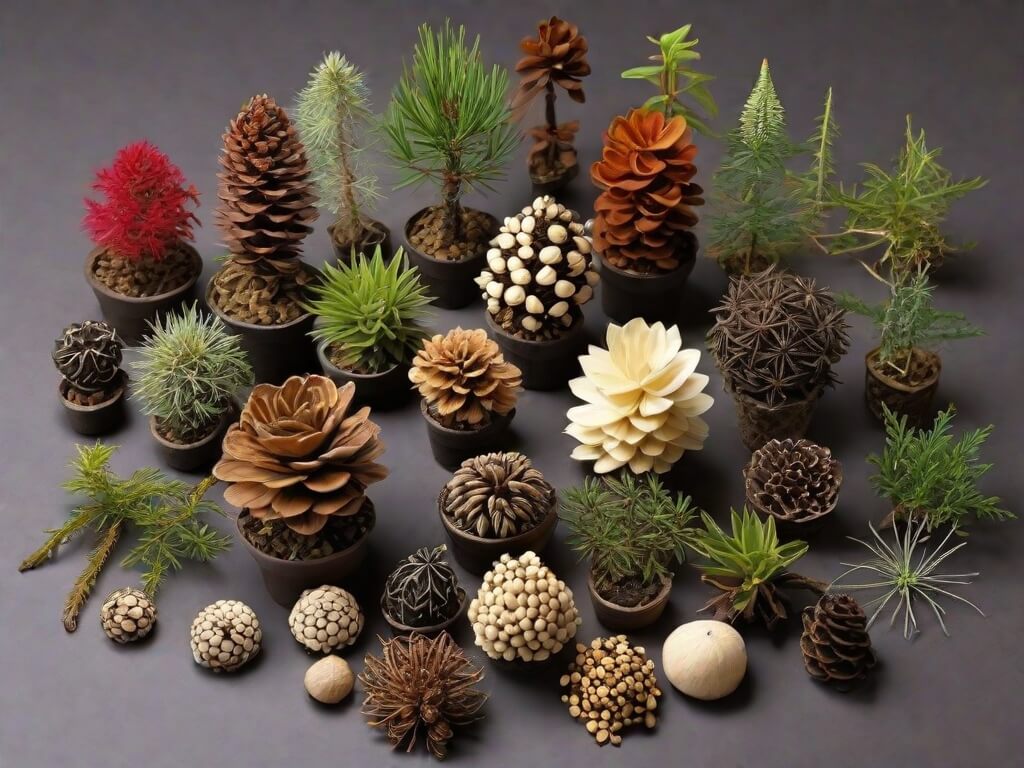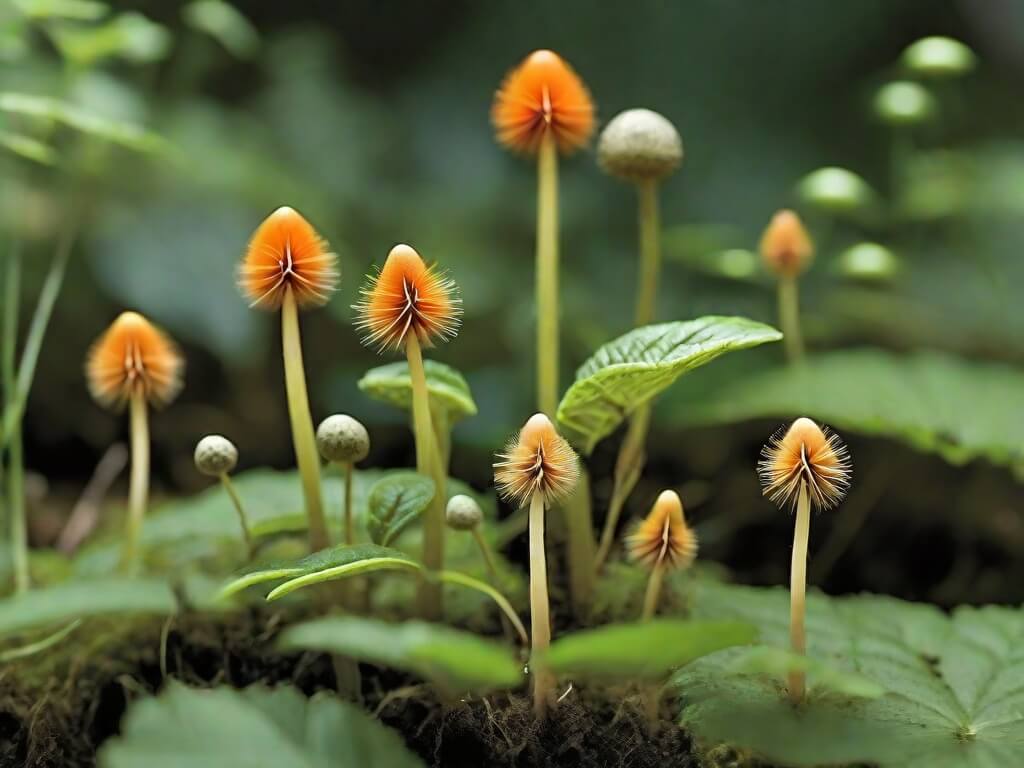Explore the fascinating world of non-flowering plants and their unique reproduction methods. From spores to fission, discover the diverse strategies that nature employs for plant reproduction. 🌿🌱 #PlantReproduction #Botany #NatureWonders

Whenever you see a plant that has flowers, you know at once that it must be a seed plant. For flowers are usually followed by seeds. However, many kinds of seed plants have flowers that are very small or very different from the common ones. You probably would not recognize them as flowers even if you saw them. There are also a few kinds of seed plants that do not have flowers. Most of these plants are trees with needle-shaped leaves that stay on all year round. Some of the trees with such leaves are the pine, fir, spruce, hemlock, cedar, cypress, and sequoia. All these plants and others like them make their seeds in cones instead of flowers. But whether a seed is made in a flower or a cone, it can grow into a new plant of the same kind.
Reproduction Methods in Plants
Many flowering plants also reproduce by regeneration. In other words, besides growing from a seed, a whole new plant can grow from some part such as a stem, root, leaf, or bulb. But except for plants with cones, only plants with flowers reproduce by seeds. All other plants without flowers reproduce in some different way. One way is somewhat like reproduction by seeds, while the other ways of reproduction are more like reproduction by regeneration. They involve parts of the plants.
Plants like ferns, mosses, and the larger algae such as seaweeds have bodies made up of many cells. So do the larger fungi such as mushrooms and molds. All these kinds of plants produce spores instead of seeds. Like a seed, a spore can grow into a new plant. Each spore also contains some stored food and has a thick protective coat. But unlike a seed, a spore does not contain a tiny young plant, or embryo. A spore is usually just one cell or sometimes a small group of cells. A large number of little spores or even a fairly big spore looks like a tiny bit of dust much smaller than any seed that you have ever seen. On the backs or edges of the leaflets of some ferns are rows of litde brown dots. Some people think that they harm the plants and pick them off. But the dots are really clusters of spore cases in which the spores are produced. The spore cases of mosses are little holders, or capsules, that stick up from the tops of the plants. When the spore rases are ripe, they open and scatter the spores into the air. The spores are blown about until they fall to the ground. On the underside of some mushrooms, there are ridges in which the spores are produced. When the spores are ripe, they fall to the ground. Then if the soil is warm and moist enough, each spore can grow into a new plant.
The body of the mold is a white and cottony mass of threadlike material, called the mycelium. Part of the mycelium spreads over the top of the bread. Other parts grow down into the bread like roots and get food from it. With a magnifying glass, you can see that the threadlike parts have many branches. If the mold is the common black bread mold, tiny white balls soon appear on the ends of some of them. These tiny balls are the spore cases. About a day later, they turn black as the spores develop inside. Through a microscope, you can see what is happening inside the spore cases while this change is going on. The protoplasm inside a spore case divides into hundreds of tiny bits. Then a cell wall forms around each bit of protoplasm with a nucleus inside it. Each bit of protoplasm with its nucleus and cell wall is a spore made of just one cell. Soon the spore case breaks open, and the spores are scattered into the air. If a spore falls in a place where it can grow, it develops into a new plant. This may happen within a few hours or only after several years. Ferns, mosses, and the larger algae and fungi all produce millions of spores that can grow into new plants like themselves.
The smaller algae have bodies made up of just one cell. So do the smaller fungi such as bacteria and yeasts. These plants are all so tiny that they cannot be seen without a microscope unless they are in colonies with thousands of plants like themselves. Bacteria and the one-celled algae have a very simple way of making more new plants. Each plant just divides in two. This method of reproduction is called fission, which means splitting into parts.

When one of these tiny plants begins to divide, the nucleus of its single cell separates into two parts. Then the protoplasm of the cell also separates into two parts, with one nucleus in each part. When this happens, there are two cells instead of just one. And each cell is a complete individual. Of course, each of the individual cells is only half as big as the original plant was. But if there is enough food, the new plants soon grow to full size. Then each one-celled plant divides again, and then there are four complete individuals. This goes on and on, and it often takes place rather quickly. Some bacteria grow to full size and divide in less than half an hour!
Yeasts reproduce in still another way, called budding. In this way, the protoplasm does not split into two parts. The yeast plant just pushes out a little swelling, or bud. After some of the nucleus goes into the bud, a cell wall forms between the bud and the rest of the cell. The bud is then a complete individual, and it may break off and grow by itself. As it grows, it can produce more new yeast plants by budding. Of course, a yeast bud is nothing like a bud on the stem of a flowering plant.